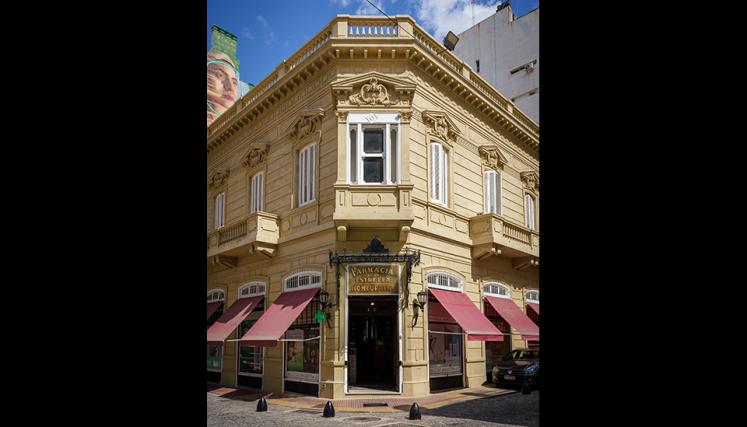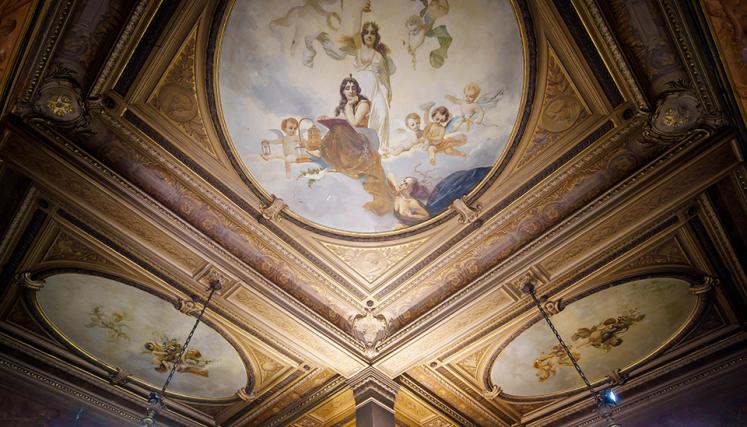¡Escuchá esta historia!
Estás en La Farmacia de la Estrella. Este edificio toma su nombre por la emblemática farmacia que fue fundada en 1834 por el bioquímico y boticario italiano Pablo Ferrari tras un encargo de Bernardino Rivadavia, el primer presidente de Argentina.
Aún en funcionamiento, es la farmacia más antigua del país y llegó a convertirse en una de las más importantes de Sudamérica.
Si entrás a la farmacia, vas a poder observar su gran valor artístico y patrimonial: aún conserva gran parte de su mobiliario y decoración original, con estanterías de nogal, cristales de murano y mármoles de carrara y, si mirás para arriba, vas a poder ver los frescos que decoran los cielorrasos.
Mirá el fresco del espacio central. Allí verás la figura de tres mujeres que aluden a “la Salud”, “la Enfermedad” y “la Farmacopea”. Esta pintura representa el triunfo de la farmacia y la salud sobre la enfermedad.
Un dato más: aquí trabajó como ayudante, en los años 1860, Melville Bagley. Él creó aquí la Hesperidina, un tónico hecho a base de cáscara de naranjas que luego se convertiría en una bebida muy popular para los argentinos. Además, Melville Bagley crearía, años después, la famosa marca de galletitas Bagley, ¡la misma de las galletitas Ópera, que llevan ese nombre por la inauguración del Teatro Colón, en 1908!
Este edificio es parte del conjunto histórico del Buenos Aires Museo.
You are in La Farmacia de la Estrella. This building takes its name from the emblematic pharmacy that was founded in 1834 by the Italian biochemist and apothecary Pablo Ferrari after a commission from Bernardino Rivadavia, the first president of Argentina.
Still in operation, it is the oldest pharmacy in the country and became one of the most important in South America.
If you enter the pharmacy, you will be able to notice its great artistic and patrimonial value: it still preserves most of its original furniture and decoration, with walnut shelves, Murano glass and Carrara marble and, if you look up, you will be able to see the frescoes that decorate the ceilings.
Look at the fresco in the central space. There you will see the figure of three women alluding to "Health", "Disease" and "Pharmacopoeia". This painting represents the triumph of pharmaceutics and health over disease.
One more fact: Melville Bagley worked here as an assistant in the 1860s. Here he created Hesperidin, a tonic made from orange peel that would later become a very popular drink for Argentines. In addition, Melville Bagley would create, years later, the famous brand of Bagley cookies, the same of the Ópera cookies, named after the inauguration of the Teatro Colón, in 1908!
This building is part of the historical complex of the Buenos Aires Museum.




